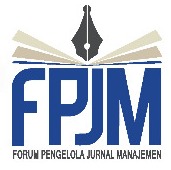OWNERSHIP STRUCTURE AND THE CORPORATE GOVERNANCE ROLE OF DIVIDENDS
Abstract
This paper reviewed the theoretical and empirical literature on the relationshipbetween ownership structure and dividends. Agency theory suggested that dividend was servedto reduce agency problems between owners (or large controlling shareholders) and managers(or minority shareholders) by reducing the amount of free cash flow and increasing monitoringby external parties. It also proposed that ownership concentration and composition mightmitigate or exacerbate agency problems. We might expect substitutability or complementaryrelationship existed between dividend and ownership concentration/composition. Empiricalevidence showed that the relationship between dividend and managerial or large shareholdingscould be negative (i.e., consistent with substitute argument), positive (i.e., consistent withcomplementary argument) or non-linear (i.e., consistent with entrenchment hypothesis). Inaddition, the literature suggested that family controlled firms might expropriate minorityshareholders by paying lower dividends or mitigate moral hazard conflicts by distributingmore cash. Empirical research on this issue, however, provided mixed findings.
Keywords
dividends, corporate governance, ownership structure, monitoring
Full Text:
pdfDOI: https://doi.org/10.26905/jkdp.v12i1.873
Refbacks
- There are currently no refbacks.
Jurnal Keuangan dan Perbankan (Journal of Finance and Banking)
Diploma Program of Banking and Finance, Faculty of Economics and Business, University of Merdeka Malang
Published by University of Merdeka Malang
Mailing Address:
2nd floor Finance and Banking Building, Jl. Terusan Raya Dieng No. 57 Malang, East Java, Indonesia
Phone: +62 813-3180-1534
Email: jkp@unmer.ac.id
 This work is licensed under a Creative
This work is licensed under a Creative
Commons Attribution-ShareAlike 4.0




